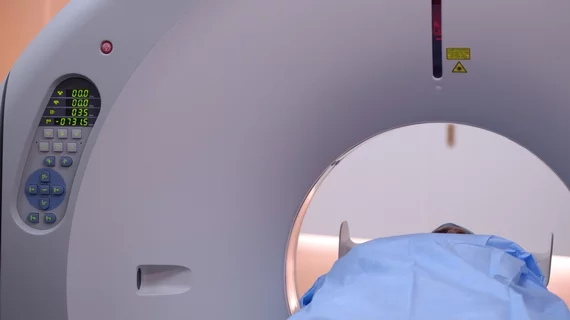CT radiation dose varies greatly due to medical staff usage, study finds
New research has found that significant differences in radiation dose from CT scans is credited how medical staff uses imaging scanners. However, setting more consistent dose standards through changes in CT protocols is possible, according to a study published online Jan. 2 in The BMJ.
Although CT scans can shed light onto diagnostic uncertainty for a wide range of conditions, radiation exposure from the scan can increase a patient’s risk of cancer. Recent studies also suggest that radiation doses used for CT scans are highly variable across patients, institutions, and countries.
They may even be reduced by at least half without reducing image quality and diagnostic accuracy, wrote Rebecca Smith-Bindman, MD, professor of radiology, epidemiology and biostatistics, obstetrics, gynecology and reproductive medicine at the Philip R. Lee Institute for Health Policy Studies at the University of California, San Francisco, and colleagues.
For the study, Smith-Bindman and her team of international colleagues analyzed radiation dose data of more than two million CT scans. The exams depicted images of the abdomen, chest, combined chest and abdomen and head from 1.7 million adults. The scans were taken between November 2015 and August 2017 at 151 medical institutions across seven countries (Switzerland, Netherlands, Germany, U.K., Israel, U.S. and Japan).
The data was then organized based on variables related to the patient (sex, age and size), type of institution (trauma center, care provision 24 hours per day and seven days per week, academic, private), institutional practice volume, machine factors (manufacturer, model), country and how scanners were used before and after adjustment for patient characteristics.
The researchers found that most of the factors only slightly impacted dose variation across countries. For example, adjusting for patient characteristics presented a fourfold range in average effective radiation dose for abdominal scans. Similar findings were presented for chest scans and combined chest and abdomen scans.
However, adjusting for technical factors (how the scanners were used by the medical staff) greatly reduced or eliminated almost all dose variation across countries.
Even so, the researchers noted their research suggests that optimizing doses to a consistent standard is possible if there is a willingness among staff to do so. Furthermore, they expressed the need for more education and international collaboration to set benchmarks for appropriate target doses.
“The variation in radiation dose across countries will reflect the variation in image quality, and user's willingness to accept noisier images. We need to determine how institutions set up their CT scanning protocols and how to develop consensus about balancing image quality with diagnostic accuracy,” the researchers wrote. “The key to protocol optimization is updating physician awareness and recalibrating expectations about what constitutes a diagnostic CT scan based on better alignment of CT protocol parameter choices with diagnostic image quality requirements,” the researchers wrote.

